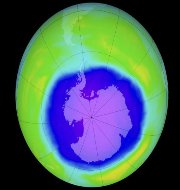Antarctic ozone hole is starting to heal: Scientists
Scientists for the first time have found clear evidence that the thinning in the ozone layer above Antarctica is starting to heal.
Ozone layer in the atmosphere’s stratospheric layer comprises of Ozone (O3), an allotrope of oxygen. It plays important role in blocking harmful ultraviolet radiation (UV) from the Sun.
The absence or thinning of Ozone layer increases the chances of skin cancer, cataract damage in human beings and even causes harm to animals and plants.
Key Findings
- In the research, scientists have found that ozone hole was around 4 million square kilometres in September 2015, smaller than it was in the year 2000.
- It was based on detailed measurements of the amount of ozone in the stratosphere between 2000 and 2015.
- These measurements were based on data obtained from weather balloons, satellites and model simulations.
- The healing of ozone layer was due to the long term phasing out (banning) of ozone-destroying chemicals (ODCs) such as chlorofluorocarbons (CFCs) in Montreal Protocol 1987.
- More than half the shrinkage of ozone hole was due solely to the reduction in atmospheric chlorine.
- However, it has found that on the role of volcanoes in thinning of the ozone layer is making the problem worse.
For more details: (i) Depletion of Ozone Layer (ii) Antarctic Ozone hole (iii) Is Ozone hole over only Antarctica?
Month: Current Affairs - July, 2016


